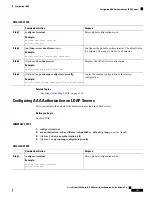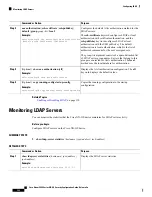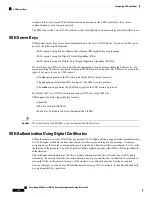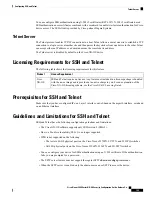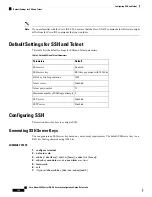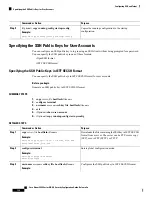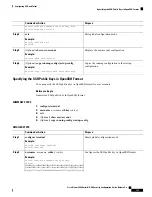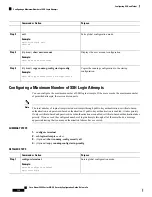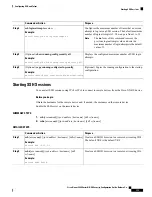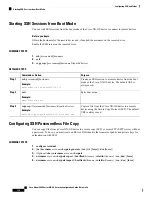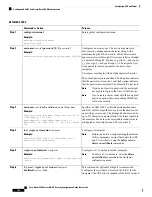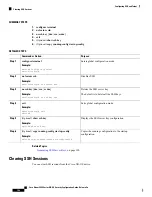
Purpose
Command or Action
Copies the running configuration to the startup
configuration.
(Optional)
copy running-config startup-config
Example:
Step 9
switch# copy running-config startup-config
Specifying the SSH Public Keys for User Accounts
You can configure an SSH public key to log in using an SSH client without being prompted for a password.
You can specify the SSH public key in one of these formats:
• OpenSSH format
• IETF SECSH format
Specifying the SSH Public Keys in IETF SECSH Format
You can specify the SSH public keys in IETF SECSH format for user accounts.
Before you begin
Generate an SSH public key in IETF SCHSH format.
SUMMARY STEPS
1.
copy server-file bootflash:filename
2.
configure terminal
3.
username username sshkey file bootflash:filename
4.
exit
5.
(Optional)
show user-account
6.
(Optional)
copy running-config startup-config
DETAILED STEPS
Purpose
Command or Action
Downloads the file containing the SSH key in IETF SECSH
format from a server. The server can be FTP, secure copy
(SCP), secure FTP (SFTP), or TFTP.
copy server-file bootflash:filename
Example:
switch# copy tftp://10.10.1.1/secsh_file.pub
bootflash:secsh_file.pub
Step 1
Enters global configuration mode.
configure terminal
Example:
Step 2
switch# configure terminal
switch(config)#
Configures the SSH public key in IETF SECSH format.
username username sshkey file bootflash:filename
Example:
Step 3
Cisco Nexus 9000 Series NX-OS Security Configuration Guide, Release 9.x
132
Configuring SSH and Telnet
Specifying the SSH Public Keys for User Accounts




